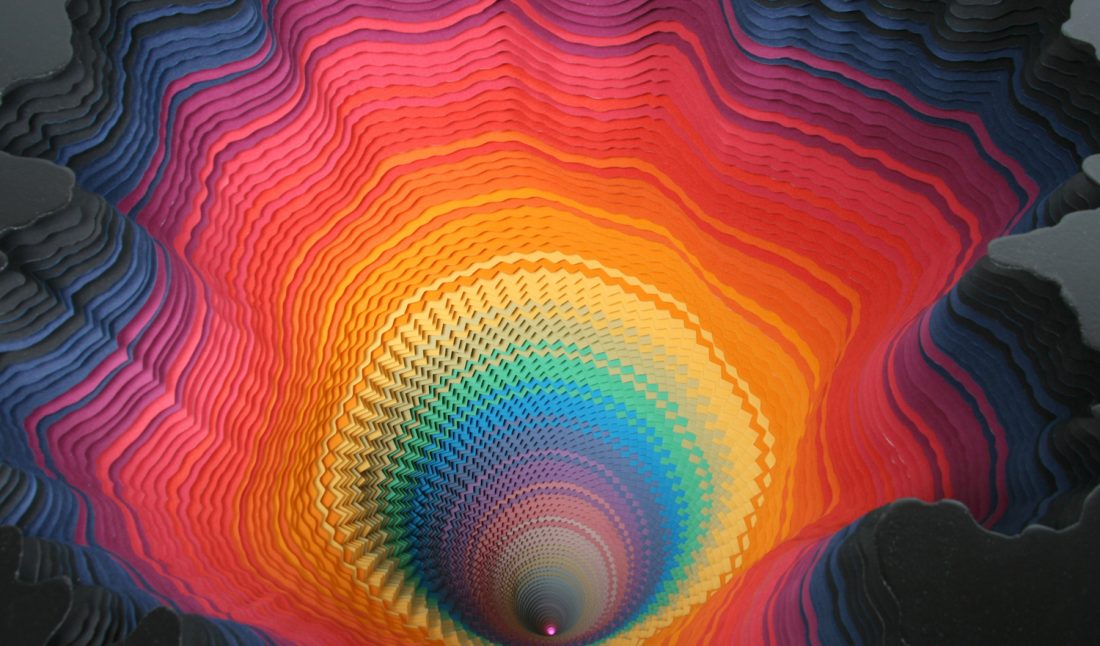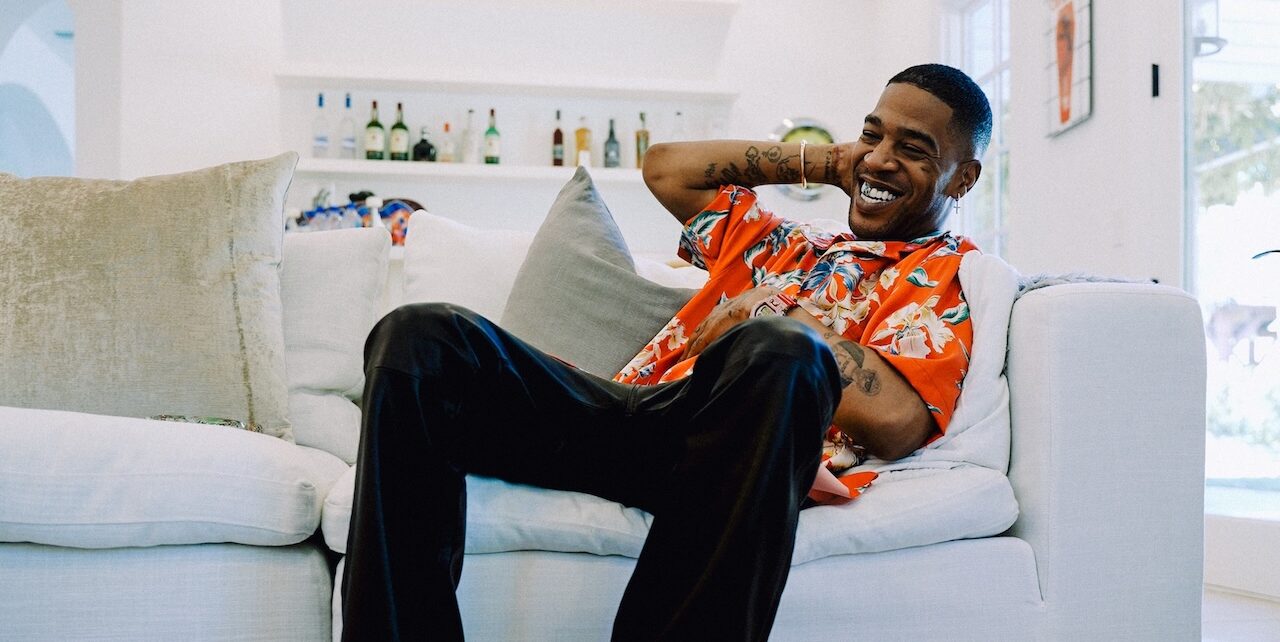The Miami-born multimedia artist Jen Stark chose her path as an artist early on. Her grandfather taught her to paint seaside scenes dotted with boats, birds, and lighthouses before her “aha” moment came when painting her Cabbage Patch doll, Pamela. “At five years old, I remember thinking my painting was better than his, like, ‘Wow, maybe I can do this art thing!’” she recently told Whitewall.
After countless art classes as a kid, and later a degree from the Maryland Institute College of Art, she took a full-time job painting interior murals for Anthropologie before taking on her first paid mural project as an independent artist at The Sagamore Hotel on Miami Beach.
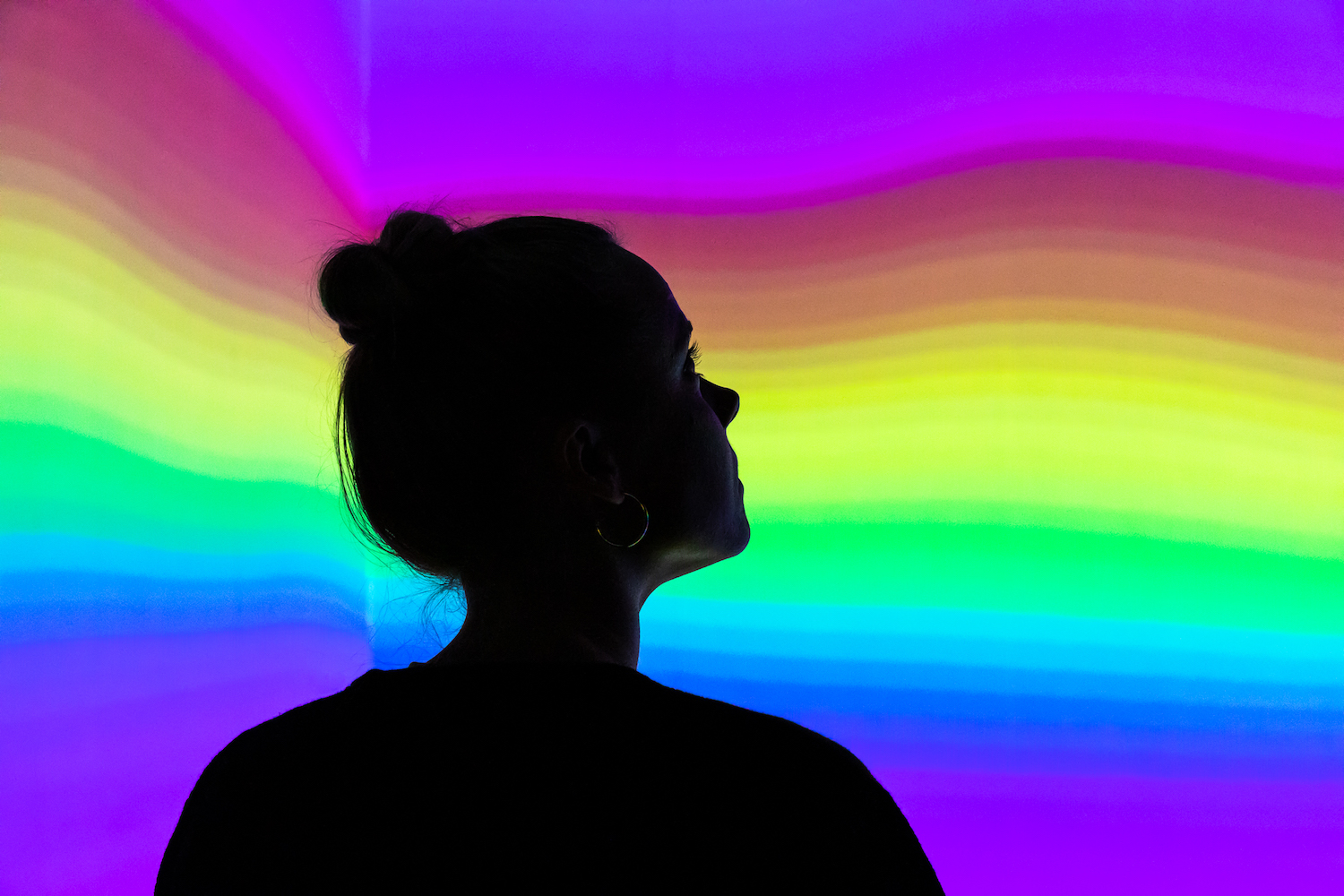 Portrait of Jen Stark in Rainbow Cycle, 2021, featured Room in “Cascade: A Jen Stark Experience,” courtesy of the artist.
Portrait of Jen Stark in Rainbow Cycle, 2021, featured Room in “Cascade: A Jen Stark Experience,” courtesy of the artist.
Stark has since moved to Los Angeles and has continued to explore the gravitational pull she has always felt toward color with dizzying, psychedelic sphere installations, 3-D optic sculptures, repetitive murals of dripping color, and trippy, patterned paintings. Previous commissions have ranged from the office walls of Facebook, The Surf Lodge, and The Standard Hotel to the music set of Miley Cyrus’s MTV Music Video Awards in 2015. In recent years, Stark has also collaborated with companies like Google, Vans, and Smashbox, cultivating a recognizable aesthetic that relies on geometry, nature, and emotion.
Ahead of releasing new NFT and digital projects later this year, as well as preparing for the second exhibition of “Cascade: A Jen Stark Experience,” Stark spoke with Whitewall about how her recognizable aesthetic was born, what’s keeping her inspired amid change, and how her work has evolved alongside developments in technology.
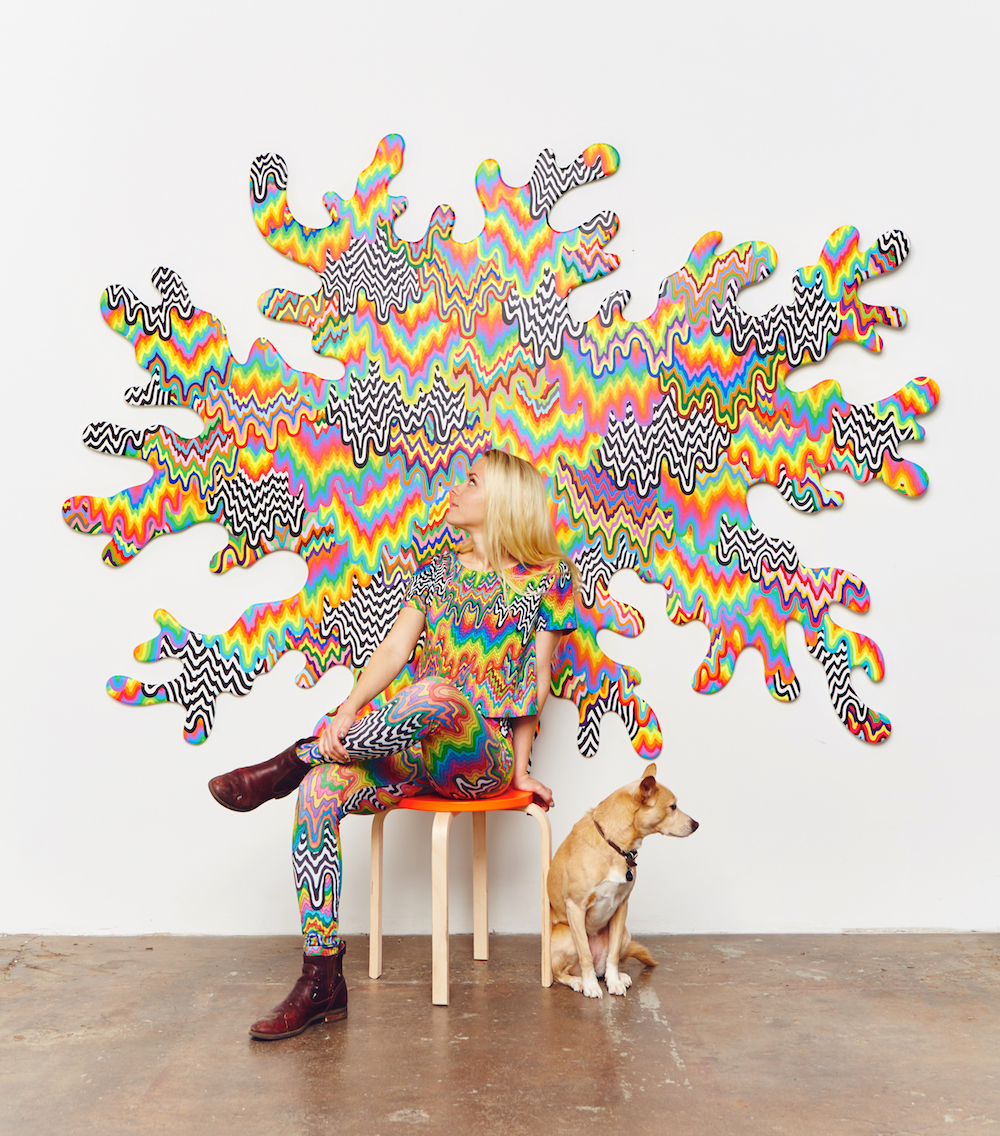 Portrait of Jen Stark by Pat Martin.
Portrait of Jen Stark by Pat Martin.
WHITEWALL: While your work has expanded, your psychedelic, geometric, and colorful aesthetic has largely remained. How did this originally come to fruition?
JEN STARK: A lot of my inspiration came from nature and my love of science and math. Growing up in Miami, I was surrounded by lush plants and a variety of colorful cultures. I was always fascinated by universal patterns in nature and felt this life force flowing through everything, so I decided to emulate that in my artwork. When I was in college, I decided to become a fibers major, which was a very open and conceptual major. We could explore whatever we were interested in as long as we were passionate about it. I was drawn to the work of artists exploring themes of repetition, meditation, and material, like Tom Friedman. He didn’t choose between being a painter or a sculptor–he would just come up with an idea and execute it with whatever material made sense.
There’s one particular piece that was an early influence for me—a construction paper sculpture of himself torn into pieces of paper, blood, and guts. I liked that he was pushing the boundaries with such a common material. My own exploration with paper began during junior year of college in 2004 when I studied abroad in the South of France. When I walked into the art store, everything was so expensive, so I decided to purchase a stack of construction paper—one of the cheapest I could find with the most potential. I wanted to see how far I could go in transforming it—turning this 2-D, everyday material into something 3-D and extraordinary. Around this time, my older sister was going to medical school, so I would browse through her anatomy books, seeing images of almost topographical dissections and layers of the body, which influenced me as well.
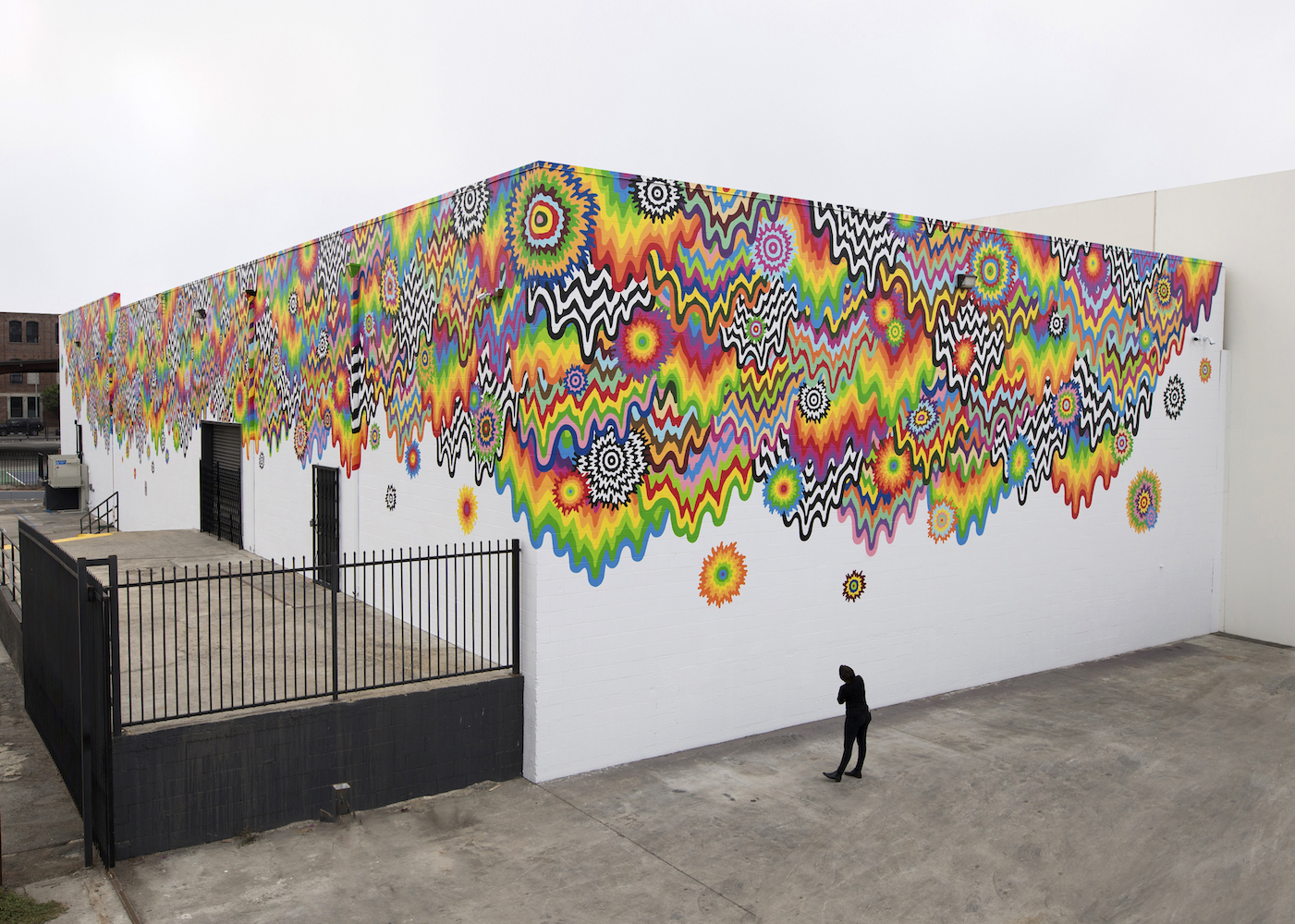 Jen Stark, Chromatic Cascade, 2017, 200 x 27 ft., latex paint, private commission in the Arts District of Los Angeles located at 1825 Conway Place, courtesy of the artist.
Jen Stark, Chromatic Cascade, 2017, 200 x 27 ft., latex paint, private commission in the Arts District of Los Angeles located at 1825 Conway Place, courtesy of the artist.
WW: What importance is color to you?
JS: Color has always been very important to me. It’s a huge part of my life, my career, and even affects how I dress. I try to surround myself with light and color constantly; it’s how I express myself and my world. I love how color can influence emotion and the patterns that it can create, and the tricks that it can play on the eye. I have always been fascinated by the dichotomies of its role in nature, such as its attractive and repellent properties—like a bright red berry enticing you to eat it or a blue poison dart frog telling you to stay away.
WW: Your public art projects are consumed by people around the globe. What importance is this type of project for you?
JS: I see public art as a way to share my work with an audience who might not otherwise walk into a gallery space or museum. One of my favorite aspects of outdoor public art is that it’s out in the elements, interacting with the world around it. It’s so important to me to create artwork that all sorts of people can interact with. Art should be for everyone, not just museum- and gallery-goers.
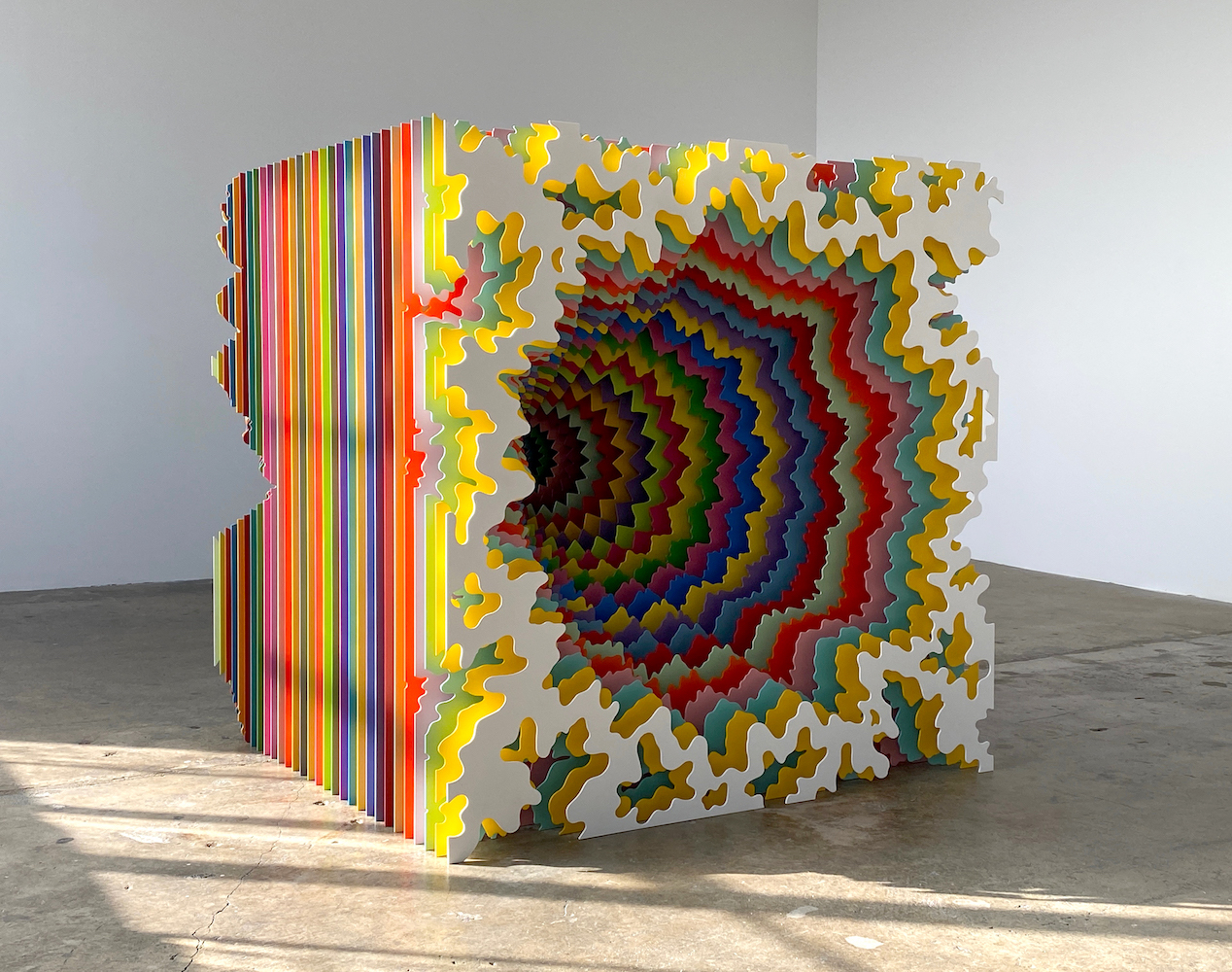 Jen Stark, “4 x 4 x 4,” 2021, 48 x 48 x 48 in., powder coated aluminum, chrome plated aluminum spacers, aluminum threaded rods, stainless steel, magnets, courtesy of the artist.
Jen Stark, “4 x 4 x 4,” 2021, 48 x 48 x 48 in., powder coated aluminum, chrome plated aluminum spacers, aluminum threaded rods, stainless steel, magnets, courtesy of the artist.
WW: When did you know it was time to venture into the digital space?
JS: I minored in animation during college, learning the history and dabbling in some 2-D and 3-D animation software during those years (2001–2005). I gravitated toward creating meditative, handmade animations, and began creating stop motions of my hand-cut paper sculptures. In 2015, MTV asked me to create animations for the Video Music Awards, hosted by Miley Cyrus. I knew that I needed a digital animator to help build my vision in a short amount of time, so I was introduced to a super talented animator/artist named David Lewandowski, who came on board. That project was a huge success and my first big jump into the digital world. Then in 2018, I created an interactive animated projection for a solo show at Wilding Cran Gallery in Los Angeles.
The animation, Multiplicity, was done in collaboration with David Lewandowski and CutMod—who specializes in interactive installations. We projected the animation on a wall, and, as the viewer walked past, the shapes would rotate and change from black-and-white to color, emitting all sorts of musical notes. It was like an abstract garden that came to life with your movement. I love creating this kind of digital work because it’s more interactive than a typical gallery show, where touching the artwork is usually prohibited. It’s much more exciting to me to get the viewer involved and have them be a part of the artwork. For me, the best way to achieve these kinds of installations has been digitally.
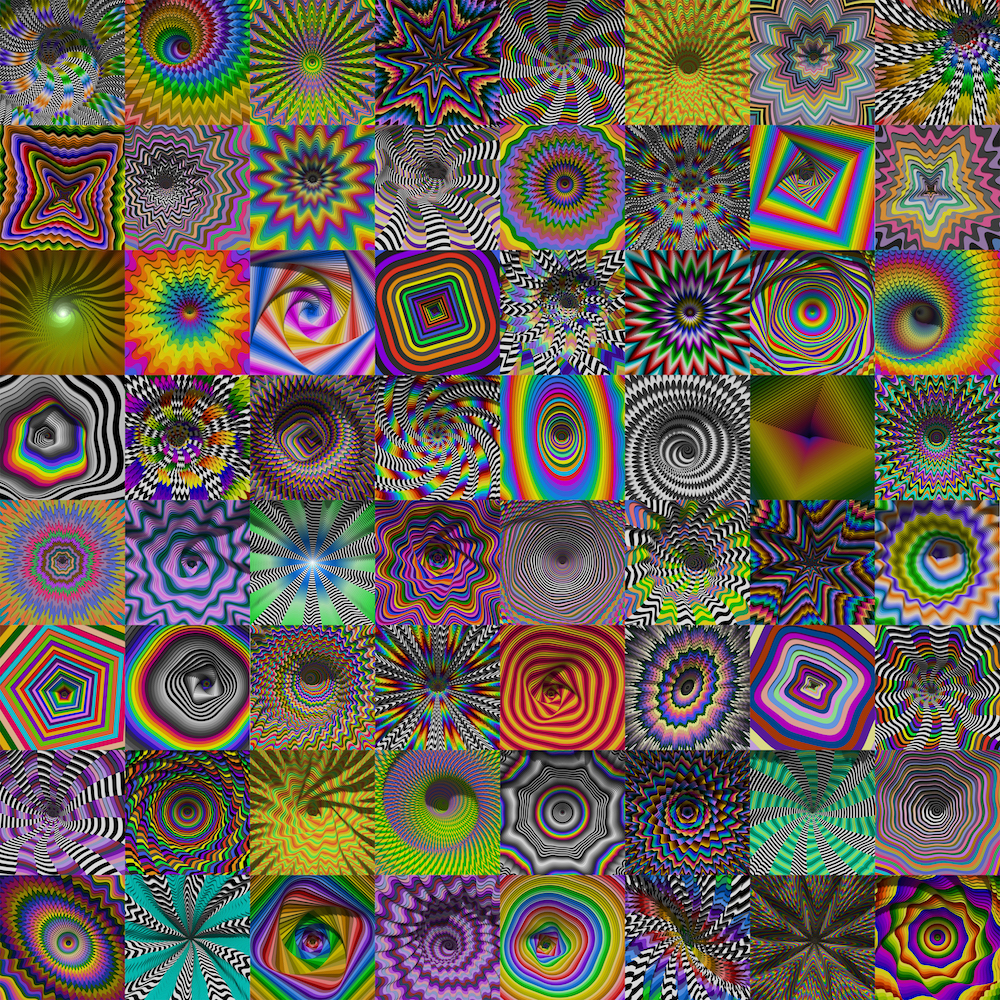 Jen Stark, “VORTEX,” 2021, curated collection on art blocks, courtesy of the artist.
Jen Stark, “VORTEX,” 2021, curated collection on art blocks, courtesy of the artist.
WW: You’ve long since been using technology to create work, even posting “going digital” in an Instagram post in 2014. How is creating digital works today different than those you’ve created in the past?
JS: I’ve always been interested in pushing the boundaries and capacities of my own expression. Over the course of my career, technology has evolved, and my practice has evolved alongside it. I’ve learned a lot more about how to apply it to my aesthetic and have allowed my digital work to shift from 3-D animations of paper sculptures to interactive projections and NFTs. I’ve definitely gotten better at translating my vision more directly with collaborators as well.
WW: Can you tell us a bit about your foray into NFTs? What was your first work of that kind?
JS: I first found out about NFTs in early 2021. A friend of mine, Sam Borkson from FriendsWithYou, mentioned the word to me over the phone and told me to start looking into it, that it was going to be the future. As I learned about it, I loved the idea of artists having their own autonomy—with your artwork directly linked to you—and benefiting from royalties from secondary sales, which rarely happens in U.S. fine art auction houses.
I began researching, going on Clubhouse, and completely immersing myself for a couple of months before dropping one of my own. I knew that I wanted to adapt an animation that I had already created with David Lewandowski, so we decided to drop Multiverse, a 1/1 on Foundation, in late March 2021. This animation, with music by Jamie Vance, was loosely inspired by the interactive exhibit we had done years before.
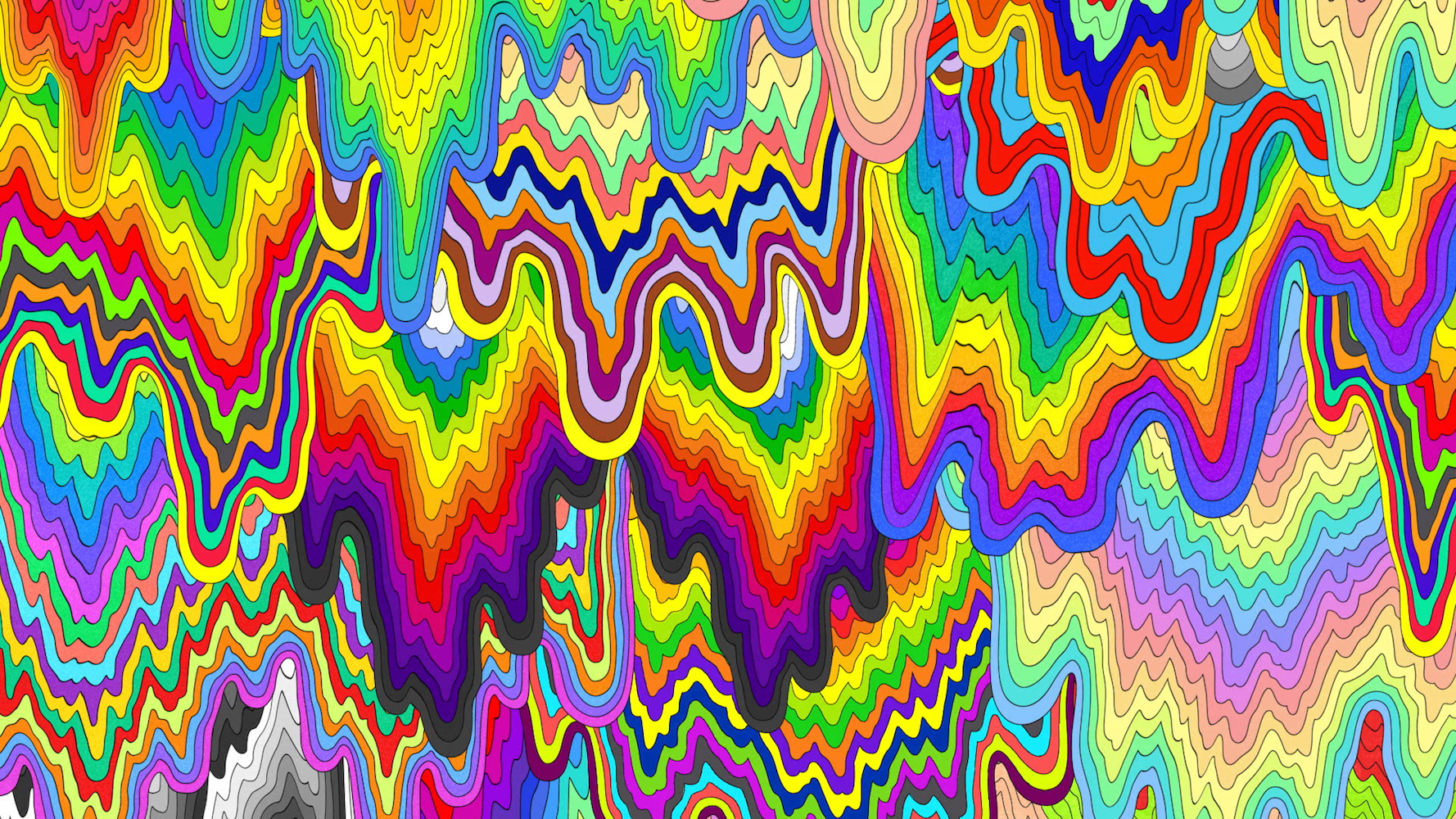 Jen Stark, Drip Cascade, 2021, NFT auction at Phillips, run time: 36 seconds, animationby David Lewandowski, sound by Charlie Scovill, courtesy of the artist.
Jen Stark, Drip Cascade, 2021, NFT auction at Phillips, run time: 36 seconds, animationby David Lewandowski, sound by Charlie Scovill, courtesy of the artist.
WW: What have you enjoyed so far about working specifically in the NFT world?
JS: I really appreciate the level of autonomy that artists have. There’s such an incredible community offering news, guidance, and general information in this space. It feels like the beginning of a big movement, with this smallish community just sharing and helping each other learn. Outside of NFT networks, I’ve generally enjoyed working digitally because it’s so much more accessible. I can easily transform an entire environment and allow people to interact with my work in a way that I couldn’t achieve as easily with physical work. In September 2021, I created my largest installation to date, “Cascade: A Jen Stark Experience” in New York, which was six rooms of digital, interactive projections. This show helped propel my digital work to the next level, with the help of my talented collaborators.
WW: Last year, during a Clubhouse discussion Whitewall hosted with you on its panel, you spoke about what it’s like being an artist outside of the gallery model. Do you still feel like an “outsider”?
JS: I was never too interested in playing by the rules of the traditional art world. I’ve considered myself a bit of an outsider artist because I work with brands or choose not to lock myself into a particular medium. When deciding to work on a specific project, I always make my decision through a gut feeling on how it relates to myself and my art, without questioning, “Will the art world accept this?” Now that I’m in the NFT space, it feels really good to be one of the first fine artists to take the leap into a new movement. I’m surprised that there aren’t more involved by now, but I think that more and more will come into the space because it’s such a great tool for artists and their communities.
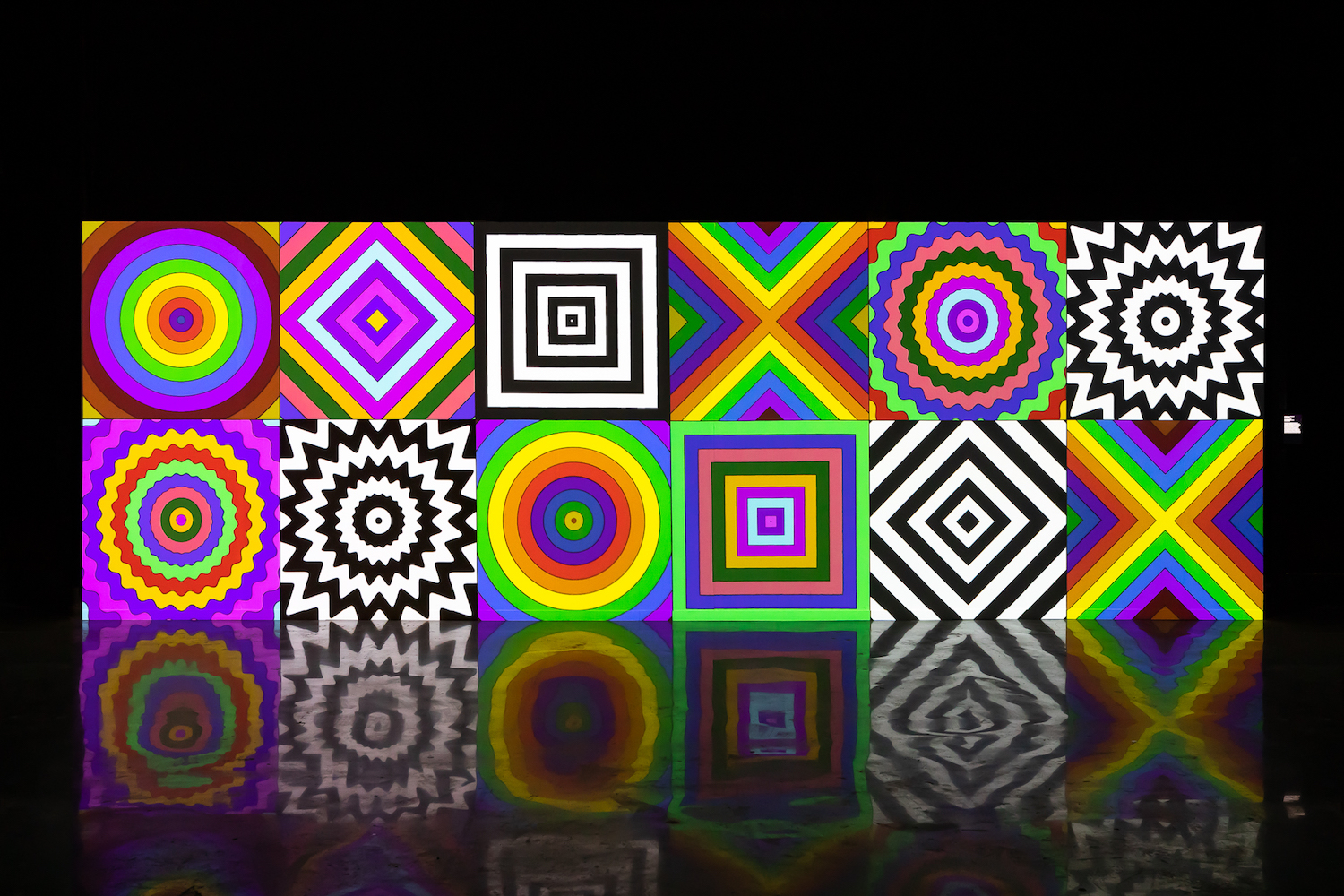 Jen Stark, “Strobe Wall,” featured in “Cascade: A Jen Stark Experience,” courtesy of the artist.
Jen Stark, “Strobe Wall,” featured in “Cascade: A Jen Stark Experience,” courtesy of the artist.
WW: Lately, in addition to companies and physical spaces, you’ve been collaborating with other artists, animators, and coders. What does collaboration bring to your work?
JS: It helps bring my work to the next level by utilizing techniques that are new to me. My public artwork and brand collaborations are another way to present my work to a new audience and help build things I wouldn’t be able to do on my own. It’s a way to amplify my work, through platforms, resources, and media that I don’t necessarily have access to solo. I feel the same way about the opportunities that come from my collaborations with other artists and creators. By exploring new avenues, techniques, and audiences, my artwork is able to continually expand and evolve.
WW: In an interview, you once mentioned, “I’ve always had a deep fascination for nature and how it relates to science and spirituality.” How does your relationship with nature today impact your relationship with art?
JS: My fascination with nature is deeply connected to the underlying mathematics of the universe, such as the fractal imagery found in everything from tree branches and nautili to the crest of a wave and the shape of galaxies. In my work, I want to explore the impact of these phenomena and discover the connections. I feel that so much of spirituality draws upon the laws and patterns of the universe, even relating to the afterlife. I think that nature is God, and it’s fascinating to take a deeper dive into everything that these types of examinations can open our eyes to.
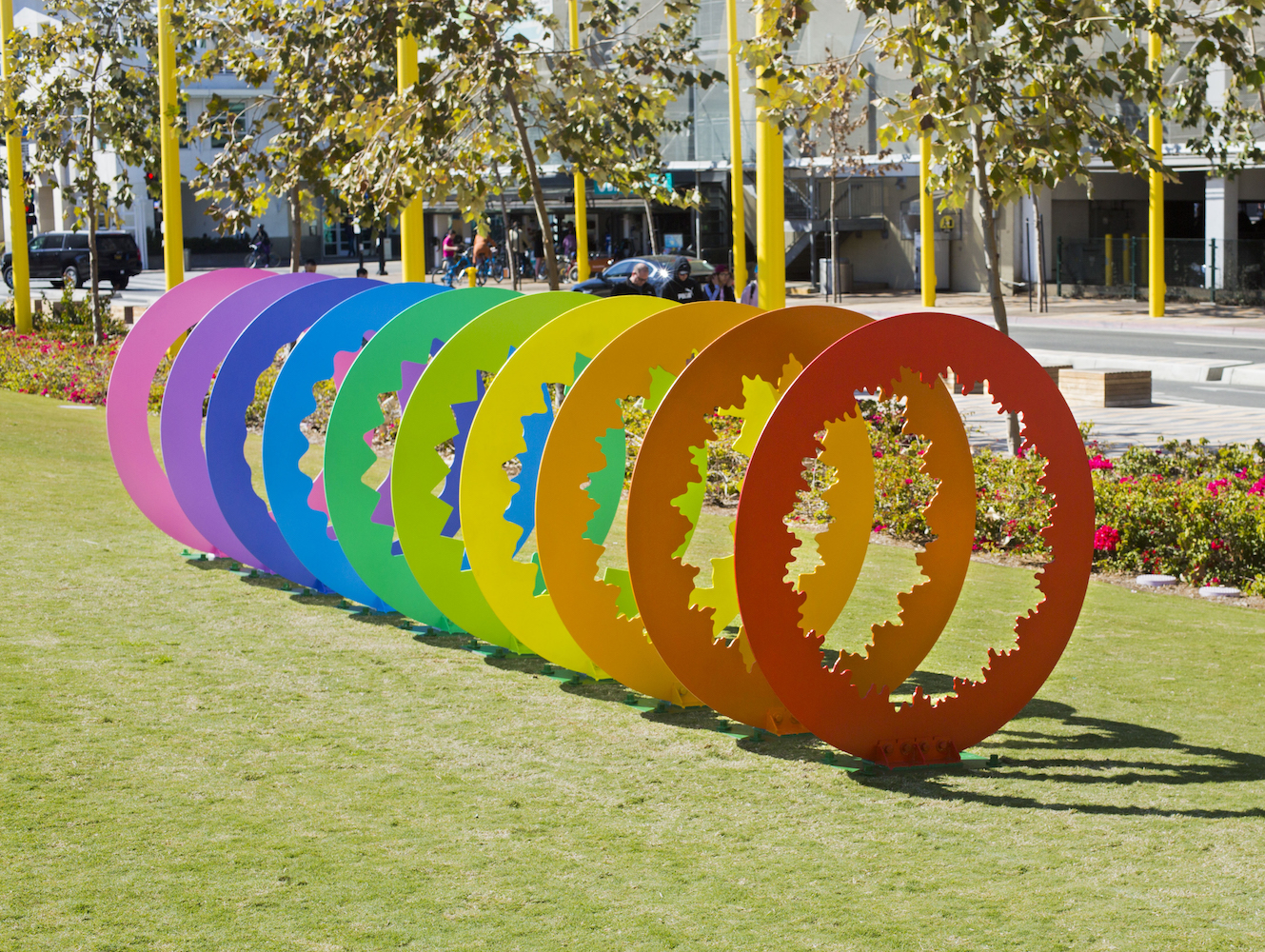 Jen Stark, “Tunnel Vision,” 2018, 60 x 60 x 240 in., steel and enamel paint, temporary public art installation in Santa Monica, CA., courtesy of the artist.
Jen Stark, “Tunnel Vision,” 2018, 60 x 60 x 240 in., steel and enamel paint, temporary public art installation in Santa Monica, CA., courtesy of the artist.
WW: After many changes over the past few years, brought on by the pandemic, politics, and more, what’s inspiring you today?
JS: Inspiration can strike at any moment, and sometimes random ideas will come to me when I’m taking a bath or even waking up from a nap. Nature will always be a steady inspiration, but there are so many unexpected moments that can spark something for me—either while relaxing outside of the studio, traveling to a new place, or meeting new people. I think that a lot of my current interest in immersion and interactivity has been influenced by the fact that we are able to socialize and inhabit public spaces more freely than at the start of the pandemic. I’m so excited by the idea of sharing my work with people who can physically interact and immerse themselves within my work and share that experience with other visitors as well.






